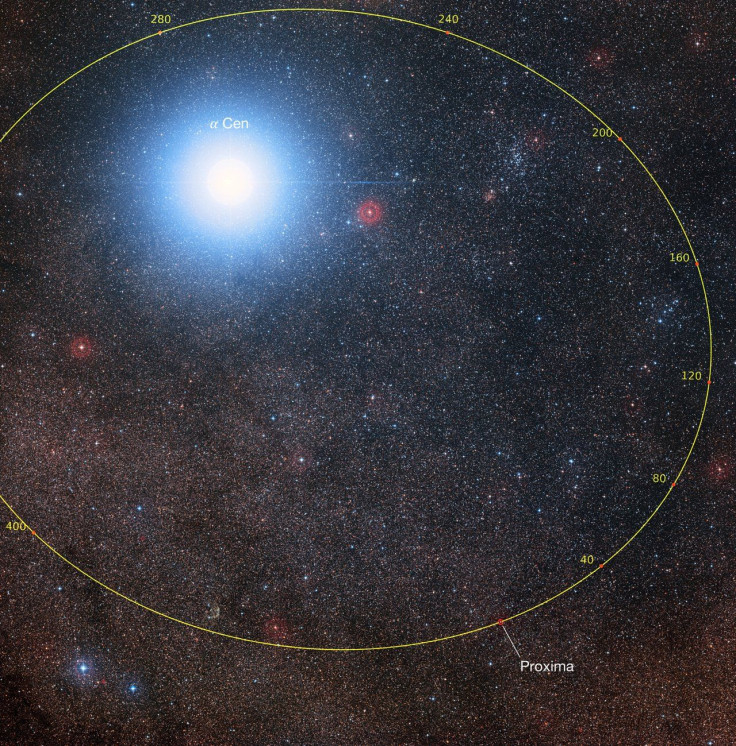Proxima Centauri Orbits Alpha Centauri Pair, Astronomers Conclude 100 Years After Red Dwarf’s Discovery

Are the three stars that constitute the Alpha Centauri star system — Alpha Centauri A, B, and Proxima Centauri — part of one gravitationally-bound triple system? This is the question that astronomers have, for the longest time, struggled to answer.
Now, when interest in our nearest star system is at an all-time high — largely due to the recent discovery of a potentially habitable exoplanet, Proxima b, around Proxima Centauri — a team of researchers have finally concluded that the three objects do, in fact, form a bound system. Their findings, to be published in the upcoming edition of the journal Astronomy and Astrophysics, were based on extremely precise measurements made using the European Southern Observatory’s 3.6-metre telescope housed at the La Silla Observatory in Chile.
If Proxima Centauri is gravitationally bound to Alpha Centauri A and B, then the three objects should be moving through space at roughly the same velocity. This is what the astronomers were able to confirm by measuring Proxmia Cenaturi’s radial velocity — the speed at which it moves toward and away from Earth.
Until now, such measurements had been difficult to carry out, primarily because the red dwarf star, as seen from Earth, is extremely faint, especially given the brightness of its two bigger companions.
“Taking account of these new measurements, calculations of the orbits of the three stars indicate that the relative velocity between Proxima Centauri and the Alpha Centauri pair is well below the threshold above which the three stars would not be bound together by gravity,” the ESO said in a statement.
In addition to finally answering a century-old question, the finding has significant implications for our understanding of what Proxima b is like, and whether the planet has — as recent studies have indicated — liquid water on its surface.

“The astronomers speculate that the planet may have formed around Proxima Centauri on a more extended orbit and then been brought to its current position, very close to its parent star, as a result of the close passage of Proxima Centauri to its cousins in the Alpha Centauri pair. Alternatively, the planet may have formed around the Alpha Centauri pair, and was later captured by the gravity of Proxima Centauri,” the ESO said. “If one of these hypotheses is correct, it is possible that the planet was once an icy world that underwent a meltdown and now has liquid water on its surface.”
© Copyright IBTimes 2024. All rights reserved.












